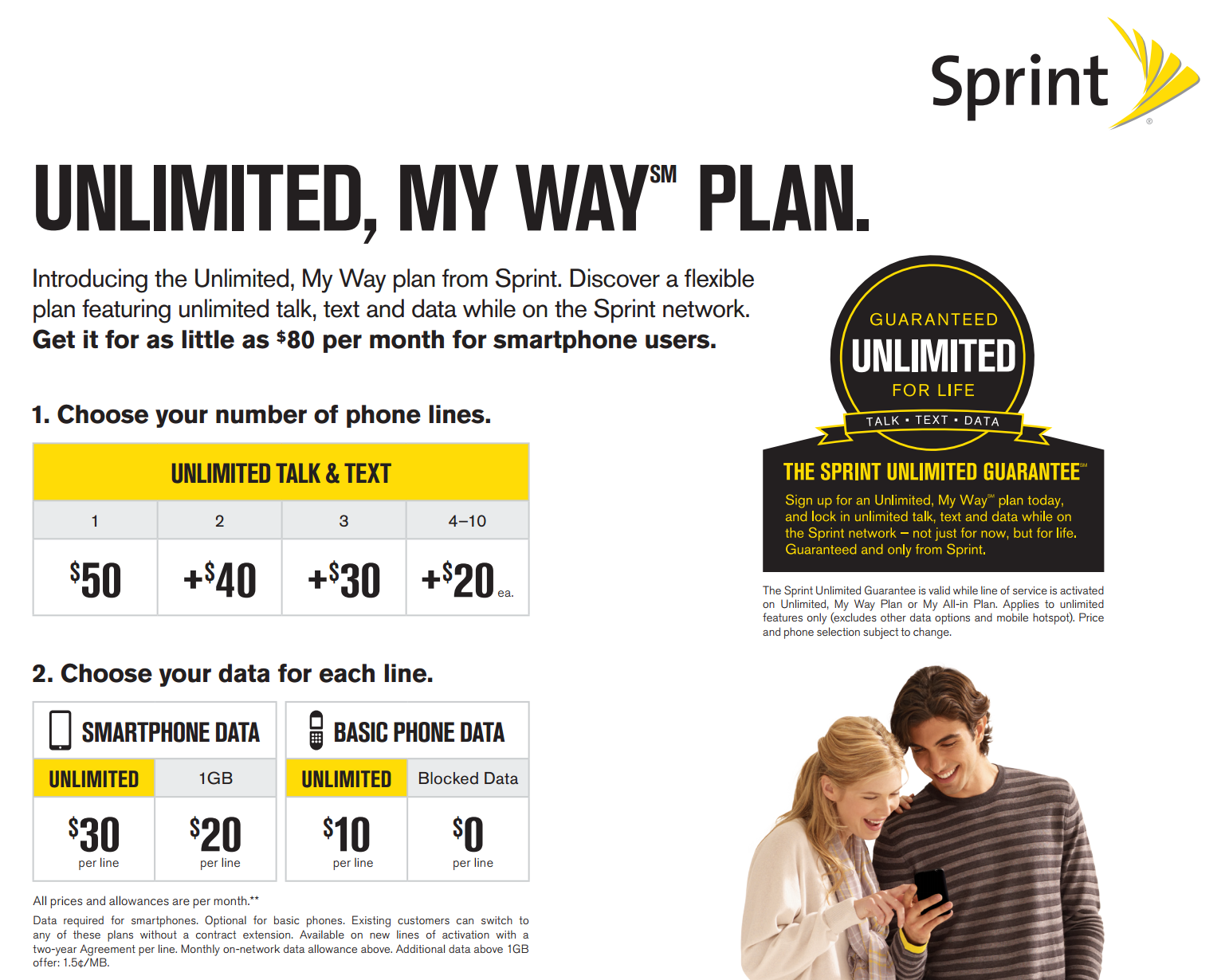Four reasons why Sprint’s new “Unlimited, My Way” plan stinks

Sprint recently restructured its phone plans to look a bit more like T-Mobile’s offerings. These plans include unlimited talk and text, with data add-ons for either 1GB of data or unlimited data. Pricing is as follows:
- First line of unlimited talk and text: $50
- Second line of unlimited talk and text: $40
- Third line of unlimited talk and text: $30
- Lines 4-10 of unlimited talk and text: $20 each
As for data, Sprint offers two plans for smartphones:
- $30 for unlimited data
- $20 for 1GB of data
At first glance, pricing actually isn’t that much different than the old plans, and for many people won’t change at all. However, before you switch your plan over to a new one or sign up for new service, there are a few things you should know.
1Mpbs isn’t enough for high-def video.
Unlimited data guaranteed “for life” might sound great on the surface, but did you notice the fine print? I’m speaking specifically of the part that states, “Streaming video speeds may be limited to 1 Mbps.” As most of you know, that’s not enough to stream a 1080p YouTube video, and video quality on Hulu, Netflix, HBO Go, or other video apps might be reduced, with even more time wasted buffering.
What good is a new LTE network, if video streaming speeds are going to be reduced so drastically? What good are all these new 1080p screens on our mobile devices if we can’t watch anything in full resolution?
Data overages stink.
If you want to save some money, you don’t have to get unlimited data. The Unlimited, My Way plan provides a 1GB option for $20/month. Unfortunately, this is twice the price per gigabyte of comparable plans on T-Mobile – and even AT&T and Verizon offer better per gigabyte prices on some of their plans.
Additionally, it’s pretty easy to stack up some overages if you’re not careful. Sprint tries to mask how expensive additional gigs are by saying it’s only $0.015/MB. That’s actually $15.36/GB, which is 50% more expensive than comparable plans from T-Mobile.
If Sprint is trying to differentiate itself from AT&T and Verizon by advertising new “unlimited” plans, it would make more sense to throttle data speeds after a certain limit is reached, possibly with an option to buy more data if a customer needs it mid-way through his or her billing cycle. This way, data amounts are still technically unlimited – like they are on T-Mobile – and consumers are protected from surprises later on.
Lower network priority also stinks.
There’s another interesting line buried in the terms: “Other plans may receive prioritized bandwidth availability.” In other words, when the network is congested, you’ll get pushed to the bottom of the pile. This specific term doesn’t exist for Sprint’s old Everything Data plans, so presumably this restriction does not apply to them.
One question remains, though: If Sprint succeeds in pushing most people onto the new Unlimited, My Way plans with lower network priority, who will be left with the highest network priority? Prepaid customers and MVNOs are also prioritized lower, so it seems like Sprint is trying to push everyone to the bottom. That doesn’t make much sense.
These new plans offer even less roaming.
All of Sprint’s old Everything Data plans offer 300MB of off-network roaming per month. Switch to one of the new plans, and you’ll only get 100MB/month. This might not be such a big deal if Sprint’s network were up to par, but as of now, there are too many places where people are forced to roam due to poor Sprint coverage. If Sprint is still planning on kicking people out who roam too much, then an even larger group of people are in danger of getting “fired” by Sprint.
Luckily, the old Everything Data plans are still available to new customers, if you do a little digging. Be very careful about the decision you make if you are already a Sprint customer, though – you don’t want to do something that you’ll regret for two years.
[Sprint]

